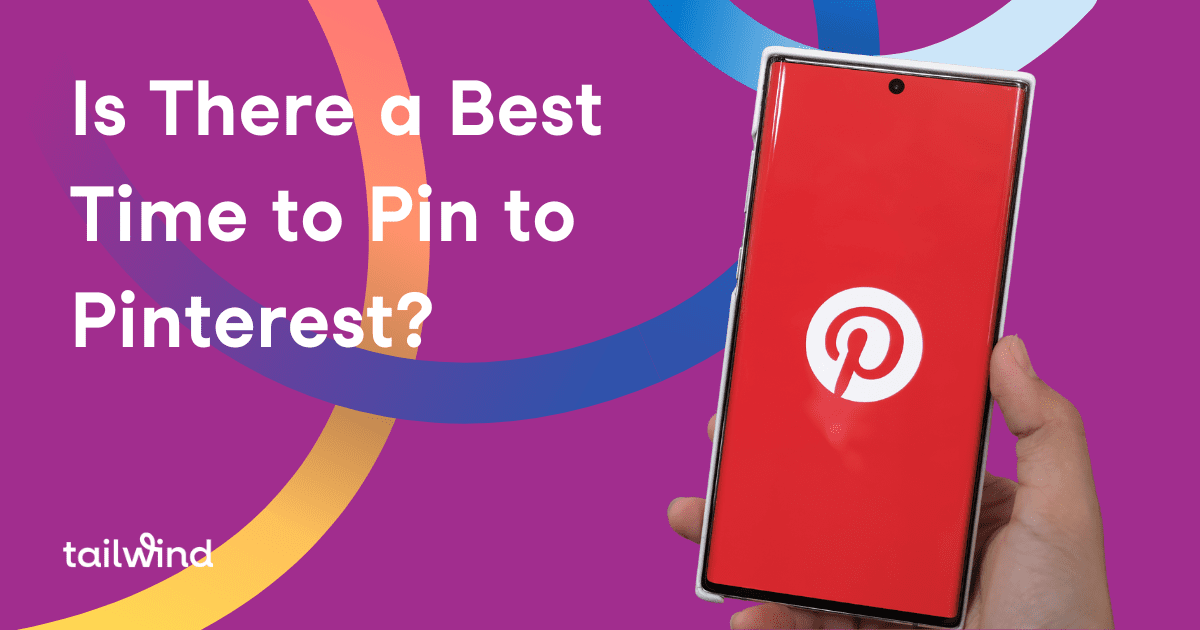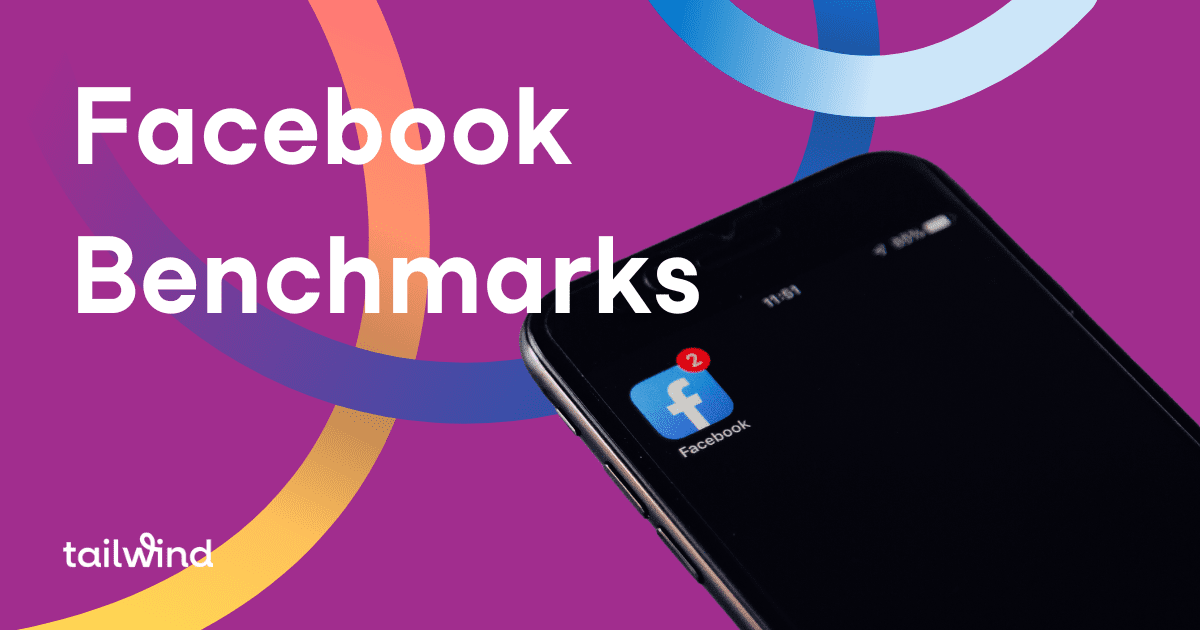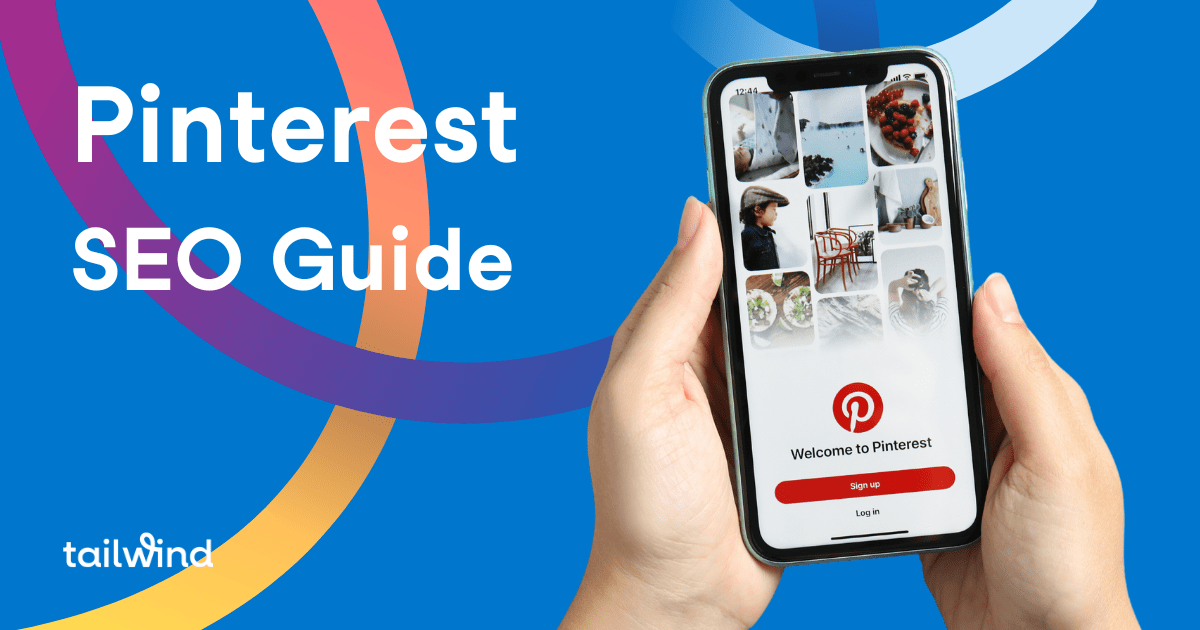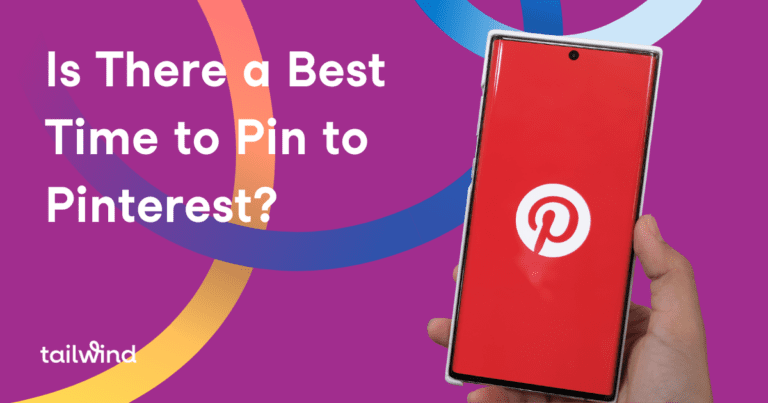
What are Pinterest boards? Most people will tell you that Pinterest boards are simply groups of Pins arranged by a topic. That’s true, but boards can also be so much more. Boards allow you to organize your content in different ways, enabling you to use your pins to tell the story of your brand.
Pinterest boards allow you to organize your content in different ways, enabling you to use your Pins to tell the story of your brand. Click to TweetThis post will show you how to use boards to inspire your audience. We’ll share some techniques for creating great boards that speak to your brand’s strengths, and provide a few tips and tricks along the way for keeping your boards organized and optimized. Once you understand the basics, creating and managing boards is easy to do. You’ll have the hang of it in no time!
Let’s start by taking a deeper look at what boards are, and how they work.
1. Boards?
In some ways, a Pinterest board works very much like a corkboard. You can think of it as a place where you stick your Pins together, just like you would stick magazine clippings and photos to a real-world corkboard.
If you’re browsing Pinterest and you see a Pin you love, Pinning it to a board allows you save that Pin to look at later. There’s much more to boards than just having a place to store Pins, of course. Pinterest allows you to have as many boards as you like, meaning you can create truly specialized boards around a single topic.
Boards provide you with a place to curate images that inspire you. They let you create a kind of collage made from images and ideas. Your boards can be filled with images that you find evocative, inspirational, or thought-provoking. In other words, you can use your boards to tell a story.
You could create a board of your dream vacation, for instance. Perhaps it includes some shots of a remote mountain villa, a quaint village, a luxurious spa, a stunning vista just outside the bedroom window and an entire menu of gourmet meals. Soon, this board becomes more than just a collection of images. It tells an evocative, visually compelling story in the same way a magazine photo spread or travel brochure can.
You could almost compare this experience to reading a book. The Pins are the words, and the boards are the chapters. By curating those Pins together in a board, you’re creating a brand new, completely personal kind of story.
For brands and companies, boards can also help you associate your products with specific emotions. You could make a board of static product images, but it would be a missed opportunity.
Why not create a board showing your product being used, solving the customer’s problem, or enriching their lives? Why not use boards to show your audience how it feels to use the product? Boards are a great way to connect your product with their day-to-day lives and their future aspirations.
On a practical level, boards also provide a powerful SEO opportunity. Remember that almost everything on Pinterest is searchable and you want to give your brand every opportunity to be found in a search. A great board brings additional keyword opportunities, allowing you to cast a wider net. Boards let you showcase your brand in as many ways as you can dream up.
Many Pinterest newcomers struggle to come up with their first few boards. What topic do you start with? What do you call your first board? How many starting boards should you create?
Don’t worry, we’ve got you covered. Let’s walk through the process of creating your first boards. It’s easier than you think.
2. Planning Your Boards
Before you start creating boards, it’s helpful to spend a little time thinking about the story you would like that board to tell. Who is your audience? What do you want them to think or feel when they browse your board?
Don’t worry if great board ideas don’t immediately spring to mind. That’s normal, and you’ll get the hang of it in no time. In fact, you can do some research and brainstorming to help you out. The key thing to remember is that your boards need to both represent your brand and reflect the interests of your audience. Every Pin you add needs to have a place in the story you want that board to tell.
To make things a little easier, we’ve created a quick-reference guide to planning your boards and a brand brainstorming exercise, which we’ll get to later in this post. You can download the PDFs here.
Let’s start with a look at both the community you want to build, and then we’ll take a quick look at how your competition tackles the same ideas.
The first step is to find two boards from people or brands that you admire. If you don’t have a favorite collection of Pinterest boards, now is a perfect time to start building one.
Spend a little time searching Pinterest topics you find interesting, compelling or inspiring. Once you’ve found a few boards you love, take a moment and think about why they resonate with you. Try to answer a few questions:
- Is it how they arrange their Pins?
- Is it the mood their boards evoke?
- Is it how they write their descriptions to provide context for their images?
Feel free to write these observations down on your board planning worksheet.
Now it’s time to take a look at two boards from your competitors. Competition can be one of the best motivators, after all.
If you represent a brand, try to find boards from brands that are similar to yours, even if they represent much larger companies. You can also look for brands that are in a different niche, but are similar to you in terms of their audience. Try to answer a few questions:
- What is this brand doing well with their boards?
- What story are they telling?
- Are they inspiring you, or boring you?
- What ideas could you borrow or adapt?
- What mistakes would you avoid?
As you examine your competition’s Pinterest boards, take plenty of notes. Pay attention to how their followers react to specific content, and what Pins and boards seem to be the most liked.
The more you explore other people’s boards, the easier it is to notice how small differences can create completely different results.
For instance, board names matter more than you may realize. The name of a board tells the Pinner what kind of content they can expect to see when they browse that board. If the name is boring or vague, they will be that much less likely to check it out.
The name of a board tells the Pinner what kind of content they can expect to see when they browse that board Click to TweetYou can see this for yourself as you browse other people’s content. What kinds of board names make you want to click on them? Chances are that you prefer boards with names that are interesting and catchy, yet also clearly indicate what the board is about.
Remember Pinterest is a search engine, so you want to make sure that your board’s names are searchable and recognizable. Board names need to be enticing and informative if you want your audience to visit them.
The next thing to consider is the board image. Every board has a primary image, and the goal of this image is to represent the tone and feel of the board’s contents. It’s the first impression your audience will have of the board, so the image needs to be clear and representative.
When looking at other people’s content, pay attention to those boards that immediately catch your eye. Take a moment to consider what made you notice them:
- Are the board images engaging and interesting?
- Do they represent the brand?
- Do they all have a common color scheme?
These are elements that you will be able to incorporate in your own boards.
Another often-overlooked element of boards are the descriptions. Board descriptions can be a little tricky because they need to be both informative and concise due to the 500 character limit.
The description needs to have just enough information for the audience to understand what they will find on the board, but short enough that you can read it at a glance. It needs to pique their interest, and sometimes that’s easier if the descriptions are short and sweet.
There are times where it’s better to have a description that is more descriptive and explanatory – but don’t go overboard. Keep it succinct whenever possible.
The final thing to look for as you browse other boards is the content. What’s actually Pinned on the board? Take notes on what works, and what doesn’t, as you explore the board itself:
- How well do the board’s contents reflect the name, image, and description of the board?
- Was it what you were expecting to see?
Audiences don’t like being misled, and this is something you definitely want to avoid as you create your own boards.
Now that we’ve spent a little time researching other people’s boards, it’s time to apply what we’ve learned to your brand.
3. Brainstorming Boards & Branding
Your audience is drawn to your brand for a reason. Your brand isn’t just a collection of products or services, it’s a story. That story is created out of real-life experiences and memories as much as any marketing image, and it represents something bigger to your audience than just a well-composed product photo.
The more you can tap into the things that your audience finds interesting, appealing and inspirational about your brand, the better your boards will perform. In marketing terms, this means better engagement and higher conversions.
As we explore a wide variety of ideas tied to your brand, don’t get too hung up on getting it “right.” This is practice and the more you can trust your instincts the better your results will be.
You can find the printable brainstorming sheet in the worksheet package you downloaded above.
A brand brainstorm a simple, effective way to find the ideas, images, emotions and inspirations most associated with your brand.
The goal here is to reflect on how your audience perceives your brand. By writing down all the words you can associate with various elements of your brand, you can start to see how those ideas can apply to Pinterest boards.
This brainstorming process is helpful, as it allows you to clarify the big themes you want to highlight through your Pinterest marketing. By focusing on specific topics, and by associating your content onto boards based on those topics, it helps create a strong, effective message.
Let’s take a look at the brainstorming PDF. It will help you understand the basic process of brainstorming.
Do you see those three columns? They are where you will write down your products and content, your brand’s themes, and your brand’s inspirations.
Let’s walk through this together. For this example, I’m going to talk about a fictional e-commerce clothing brand called “Wind.” Wind is the perfect intersection between comfort and functionality, inspired by young professionals. Its pieces can be worn at the office, on the go, or and at your favorite bar. Wind caters to men and women from the ages of 18-30.

That’s not a bad description for an imaginary brand, right? Just imagine how much easier this is when you’re talking about a real-life brand.
Let’s walk through the “word” section together. You are going to write down words that come to mind when you think about your brand’s products or services. Don’t worry about finding the perfect words here. Just write down everything that comes to mind.
What are Wind’s product words? Shoes, bags, purses, jewelry, socks, belts, and sunglasses all come to mind. These words reflect Wind’s products, but you can just as easily swap out products for services.
Next, let’s talk about the themes. What adjectives apply to your brand? What concepts help describe the kinds of products you sell? What categories does your brand fit into?
For Wind, I see themes like seasons, modern, young, fresh, local, travel, versatile, young, and professional. These words give a context for the product ideas, placing them into specific genres and categories.
We’re circling in on the kinds of boards we need to create to communicate Wind as a brand to our target audience. But we’re still missing one final piece.
The last thing we need to think about is what inspires our audience, and what inspirations we share with them. Pinterest is all about sharing inspiration, after all.
You can incorporate words the that inspired you to start your brand or business. You can talk about the ideas or emotions that helped you create specific product lines or services. Think about the ideals that keep you motivated, and keep your brand moving forward.
For Wind, our fictional example, I might use words like modern, functional, comfortable, and affordable. I might also list highly specific inspirations, like “great threads for busy professionals” or “my super fashionable mother.”
Some of these words may overlap with your theme list, and that’s totally fine. The goal here is to come up with as many creative, evocative words as you can, and to get your creative juices flowing.
Let’s take a look at our worksheets. The brainstorming session has given us a wide range of ideas, phrases and concepts to use as we build our Pinterest boards.
The next step is to turn this swarm of ideas and words into compelling board names. Again, this is just an exercise. It’s practice, and nothing has to be permanent. If you don’t like what you come up with, you can always change it later. The goal here is to build up your “board naming muscles,” and to start thinking creatively about your Pinterest boards.
The naming process is simple. From the list of products, themes, and inspirations you wrote down, create a dozen or so board names. For Wind, these might be:
- Fall Travel Bags,
- Day to Night Looks,
- Functional Professional Accessories,
- Versatile Style for Men, and
- Inspirations for Wind.
These board names are all tied to the brand, and they’re taken directly from the words, themes and inspirations I wrote down.
Next, pick five of your favorite board names from your list. Choosing a small number of boards is a great place to get started because it won’t overwhelm you.
When you’re just getting started with your Pinterest boards, it’s better to keep things simple. The more boards you create, the more content you will need to curate for each board. It’s better to focus your efforts on maintaining a few high-quality boards with a consistent flow of great content.
Are you ready for some exciting news? Now that we’ve done the hard work of brainstorming about our brands, we have some great ideas for boards. With that out of the way, it’s time to move on to the fun stuff! Let’s head over to Pinterest and create our first boards.
4. Creating Your Boards
Now that you’ve done the heavy lifting and brainstormed some ideas for boards, actually creating the boards themselves will be a snap. Pinterest has made it super easy to create a new board.
Let’s get started! The first step is to log into Pinterest and click on your username in upper right-hand corner. This will take you to your profile page. On your profile page, just below your account stats like “Followers”, “Pins” and “Likes” is the section where your boards will be displayed. On the far left of that section, you will see a grayed-out box that reads “Create a board.”

After clicking on the box, a pop-up window will appear. From here, it’s just a matter of filling in the blanks. If you did the brainstorming exercise in the last lesson, this part should be easy.

The first field is for your board’s name (1). Remember that you want the name to be both instantly recognizable and searchable. Look back at the words, themes and inspirations you wrote down during the brainstorming exercise, and use one of the names you created.
Next is the description field (2). As I mentioned earlier, the description is extremely important. Pinterest is a search engine, and your description should say exactly what a visitor will find on the board.
The next field is the drop-down menu for your board’s category (3). Categories are important for Pinterest features like Smart Feed and Guided Search. You always want to add a category to your board, even if it’s not a perfect fit with your board’s theme.
Next, you will have the option to make a board secret (4). This will hide the board, and its Pins from your audience – this can be helpful if you are still working on your board, and don’t want to make it public until you are ready. You can always make the secret board public later on.
The last option is to add collaborators (5). This is where you can invite your friends to your board so they can add content to the board with you. You can ignore this for now and come back later to add collaborators.
When you’ve filled in the name, description, and category fields, simply click the “create” button (6). Voilà! You’ve created your first board!
Now it’s time to fill these boards with Pins. But to do that, you are going to need to know what kind of content to Pin, where to find content, and then how to decide what boards to Pin them to. Check out launchpad, our free education hub, to learn more about getting starting creating an effective Pinterest marketing strategy.
Did you create a Pinterest board using our guide? If so, leave your board URL in the comments below!
Related: How to find, join, and use Pinterest group boards.

Pin this post!





